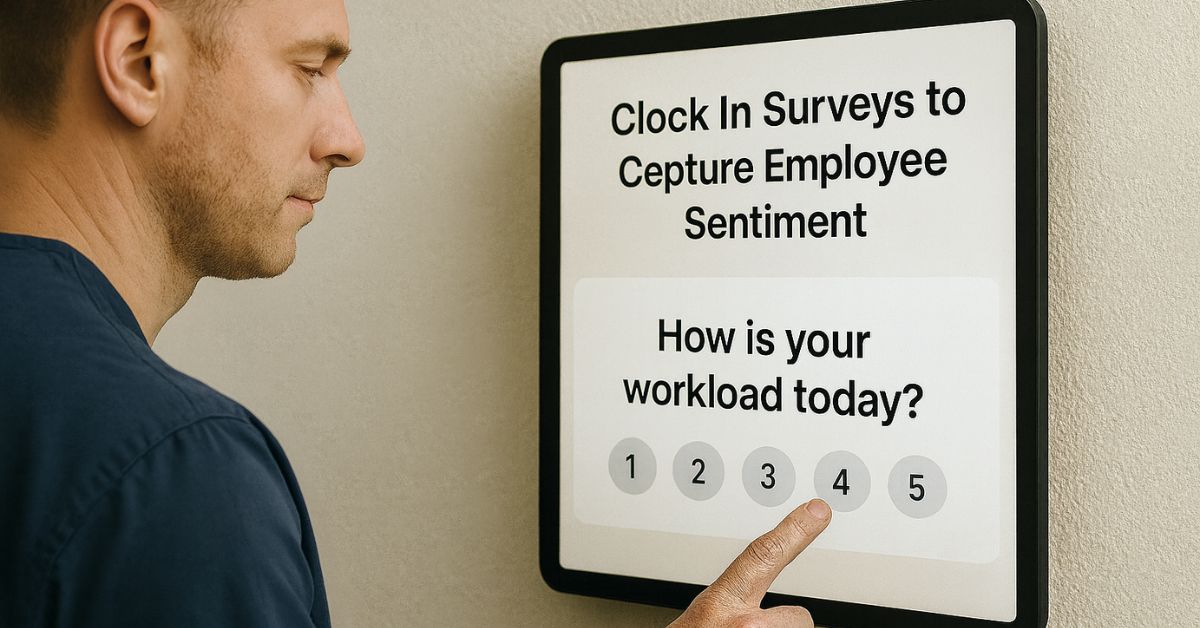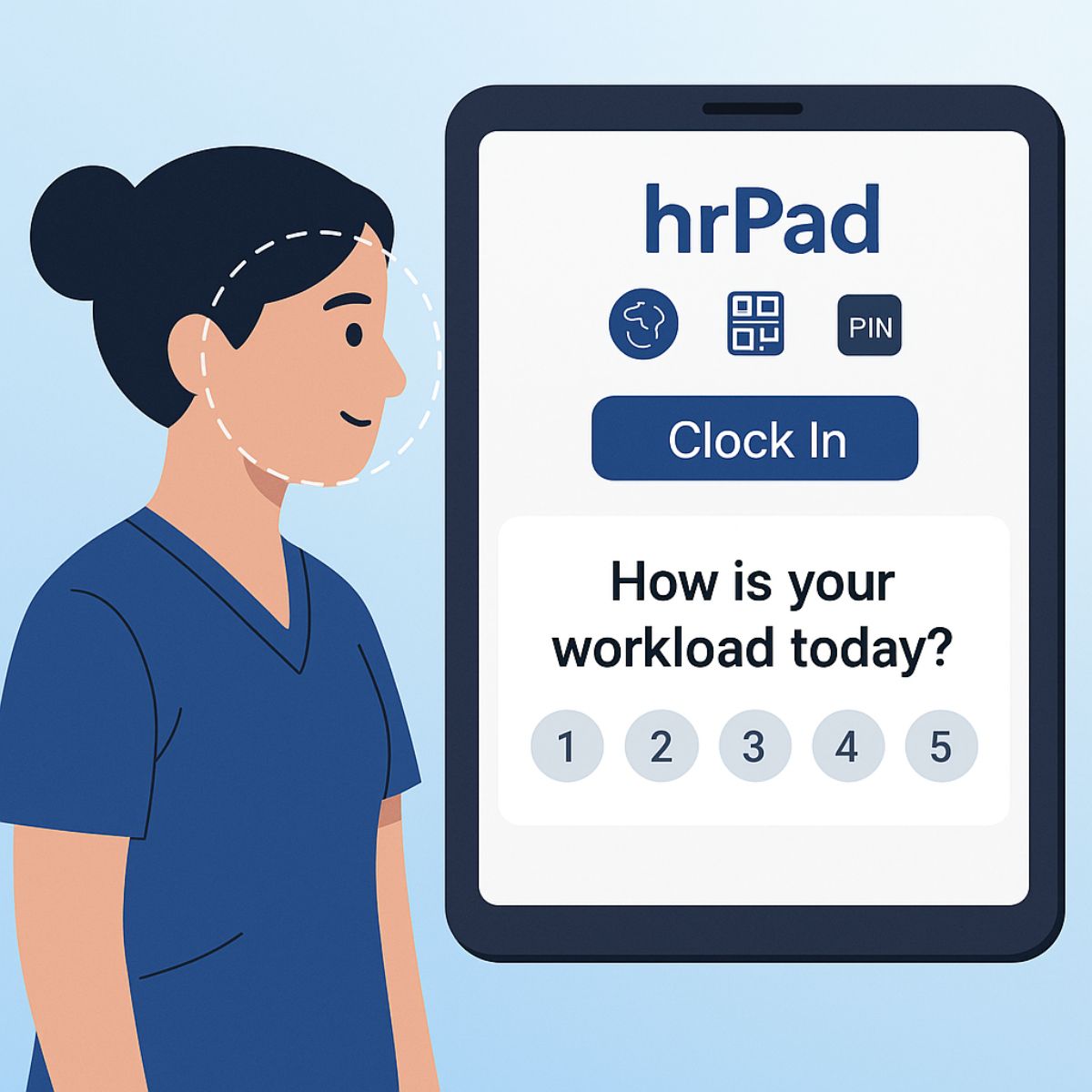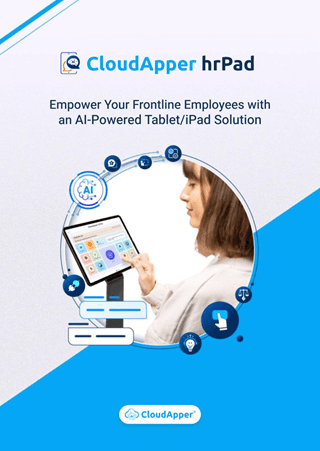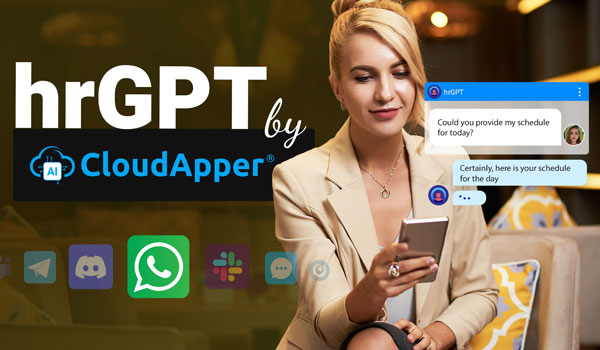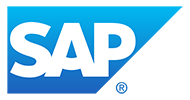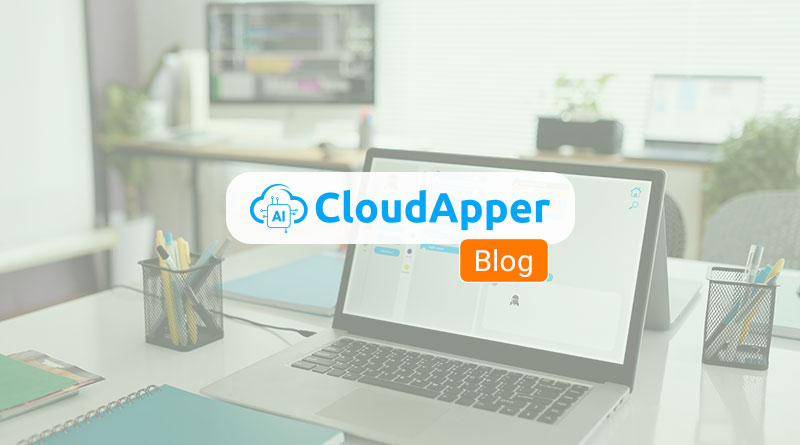Table of Contents
Imagine this: your frontline staff rushes in for their shift, swipes in, and heads straight to work. In those quick moments, they might be carrying frustrations, suggestions, or even positive feedback—but there’s no easy way to share it.
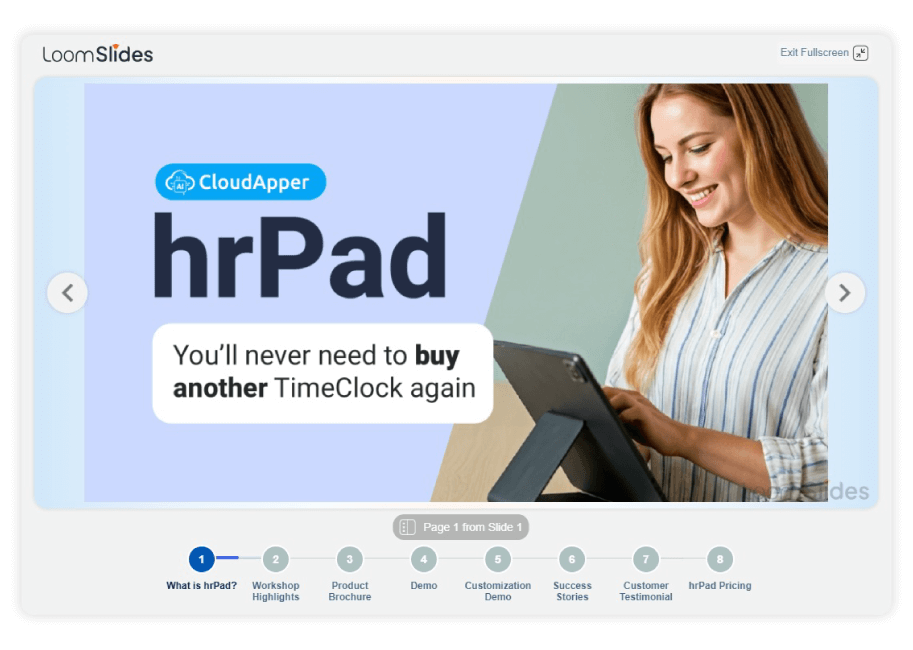
For more information on CloudApper hrPad visit our page here.
Now picture this instead: at the exact moment they clock in, they answer one quick, relevant question—like “How supported do you feel this week?”—and HR instantly sees the results. This is the power of clock-in surveys.
Retention isn’t just about pay and benefits. It’s about making employees feel heard—every single day. And by collecting employee sentiment at the start or end of a shift, organizations can act fast to improve morale and reduce turnover.
What Employee Sentiment Really Means (And Why It’s Hard to Measure)
Employee sentiment is the collective mood, attitudes, and outlook of your workforce toward their jobs, leadership, and workplace. It’s a pulse check on engagement.
The challenge?
- Traditional surveys are long, tedious, and done only once or twice a year.
- By the time results are analyzed, the moment for change has passed.
- Many employees hesitate to share concerns unless asked directly—and at the right time.
Measuring sentiment in real-time is key. And there’s no moment more consistent and low-effort than when employees clock in or out.
The Power of Clock-In and Clock-Out Surveys
Clock-in surveys are short, targeted questions presented during the daily time capture process. They’re quick enough not to disrupt work but powerful enough to uncover real issues.
Examples of effective clock-in questions:
- “Do you feel equipped to do your job today?”
- “How is your workload this week?”
- “Do you feel supported by your team leader?”
With hrPad, these surveys are built directly into the time clock process—no extra systems, no manual tracking. It’s a natural part of the daily routine, which increases participation rates and data accuracy.
Turning Feedback into Retention Strategies
Collecting sentiment is just the first step—the real value comes from acting on it.
For example:
- If multiple employees in one location say their workload feels “unmanageable,” staffing schedules can be adjusted before burnout hits.
- If sentiment scores dip in a certain department, leadership can investigate and address the cause—whether that’s equipment issues, poor communication, or resource shortages.
By connecting feedback to action, you send a clear message to employees: We hear you, and we’re making changes. That kind of trust is what drives retention.
Scaling Sentiment Collection Across Multiple Locations
For organizations with dozens—or even hundreds—of locations, gathering feedback consistently can feel impossible. But with a centralized system like hrPad, sentiment data from every site is collected, stored, and analyzed in one place.
Standardizing questions across locations ensures the data is comparable. HR leaders can filter results by region, role, or even time of day to spot trends and take targeted action.
This is especially valuable for multi-site industries like healthcare, retail, manufacturing, or hospitality—where culture and challenges can vary widely between locations.
Privacy, Anonymity, and Honest Feedback
One of the biggest concerns for employees is whether their feedback will be truly anonymous. Without anonymity, responses can be filtered or guarded.
Clock-in surveys on hrPad can be designed to collect anonymous data, which encourages honesty. This is particularly important in unionized workplaces or industries with strict compliance requirements. Employees can share openly without fear of backlash, ensuring that leadership gets a true picture of sentiment.
Integrating Sentiment Data with HR Action Plans
A daily sentiment survey is like having a constant pulse on your workforce—but only if you use it.
A simple framework to turn data into action:
- Collect: Short daily surveys at clock-in or clock-out.
- Analyze: Look for patterns in scores and feedback.
- Prioritize: Identify the most urgent or recurring issues.
- Act: Implement changes—whether that’s adjusting shifts, resolving conflicts, or adding resources.
- Follow Up: Share with employees what’s been done in response to their feedback.
Closing the loop is critical—when employees see that their input leads to change, participation and trust soar.
Real-World Example: Reducing Turnover with Clock-In Surveys
Consider a healthcare provider with 300+ locations. Before implementing clock-in surveys, they relied on quarterly engagement surveys—by the time results came in, issues had already escalated.
After switching to daily micro-feedback via hrPad, they noticed a sharp dip in morale in one region due to understaffing. Within a week, they reassigned resources, added shift flexibility, and sentiment scores rose by 22%. Over six months, turnover dropped by 15%.
How hrPad Makes It Simple
hrPad turns any tablet into a time clock and self-service kiosk—with built-in survey capabilities. Here’s how it works:
- Custom Questions: Set your own or let AI suggest them.
- No Extra Steps: Surveys appear during the clock-in/out process.
- Centralized Analytics: View trends across all locations in real-time.
- Employee-Friendly: Anonymous mode encourages honesty, while quick response options keep things moving.
The result? A continuous feedback loop that’s easy to manage and proven to improve retention.
Listening is the New Retention Strategy
In today’s labor market, keeping your best employees isn’t just about offering competitive pay—it’s about proving you care. Clock-in surveys give you a simple, scalable way to hear your workforce every single day.
When employees feel heard, valued, and supported, they’re far more likely to stay—and to thrive.
Ready to see how clock-in surveys can boost your retention? Contact us today and discover how hrPad can make it effortless.
What is CloudApper AI Platform?
CloudApper AI is an advanced platform that enables organizations to integrate AI into their existing enterprise systems effortlessly, without the need for technical expertise, costly development, or upgrading the underlying infrastructure. By transforming legacy systems into AI-capable solutions, CloudApper allows companies to harness the power of Generative AI quickly and efficiently. This approach has been successfully implemented with leading systems like UKG, Workday, Oracle, Paradox, Amazon AWS Bedrock and can be applied across various industries, helping businesses enhance productivity, automate processes, and gain deeper insights without the usual complexities. With CloudApper AI, you can start experiencing the transformative benefits of AI today. Learn More
